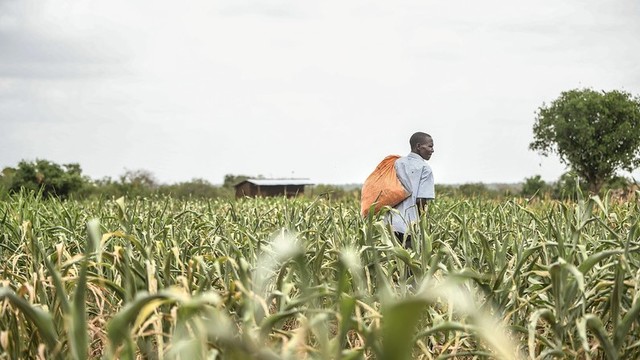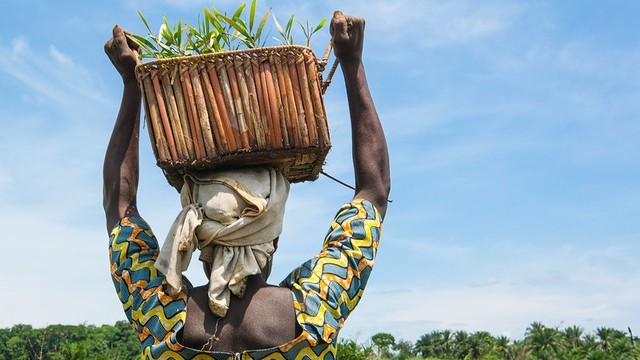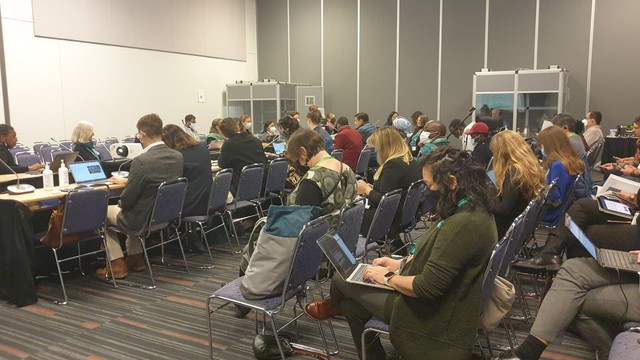Reflections on COP15 and the ‘super years’ for people, nature and climate
Nicola Sorsby and Ebony Holland reflect on three remarkable years of global policy action for IIED and partners, culminating at COP15, a key moment for biodiversity and the last in a series of high-level negotiations in 2020, 2021 and 2022, the ‘super-years’ for nature, climate and people.



The UN Biodiversity Summit COP15 took place in Montreal in December 2022 (Photo: UN Biodiversity, via Flickr, CC BY 2.0)
In early 2020 the hotly anticipated ‘super year for nature’ was interrupted by COVID-19, throwing the climate and biodiversity advocacy plans of IIED (and the world) into disarray.
From our homes-turned-offices in lockdown, we convened virtual biodiversity dialogues and partnered in a ‘call to action’ targeted at global leaders attending the UN Biodiversity Summit – the outcome of which was the Leaders Pledge for Nature.
In January 2021, IIED and partners welcomed the start of the delayed ‘super year’ for nature, climate and people, little knowing this journey would actually last two more years.
Nevertheless, this extension did, in the end, offer an opportunity to better connect the links between rising inequality, biodiversity loss and climate change.
Throughout 2021 and 2022, IIED worked closely with partners to influence these major events, including the 26th and 27th UN climate talks in Glasgow (COP26) and Sharm el-Sheikh (COP27) and the 15th UN biodiversity conference (COP15) in Montreal. Originally scheduled for October 2020 in Kunming, COP15 was postponed twice. Eventually held in December 2022 in Montreal, it was a pivotal policy moment to signpost the next 10 years of action for biodiversity.
A major new international agreement for biodiversity
The key success at COP15 was the Post-2020 Global Biodiversity Framework (GBF) (PDF), a landmark agreement that replaces the Aichi targets and sets new goals and targets for conserving nature and biodiversity by 2050. Following three and a half years of negotiations, the GBF is a major accomplishment, though not all parties were happy with the process or final outcome.
In the lead-up to and at COP15, IIED and partners were involved in a series of reports, events and other activities highlighting the importance of locally-led action and the need to put the rights, needs, interests, cultural values, knowledge and customary governance systems of Indigenous Peoples and local communities (IPs and LCs) at the heart of the GBF.
Key building blocks of the GBF
Certain elements of the GBF stand out as important for supporting locally-led action for people, nature and climate. Parties agreed the controversial 30x30 target to conserve 30% of the world’s land, inland water and marine areas by 2030, emphasising equitable governance of protected areas, recognition of Indigenous and traditional territories, and IP and LC rights.
A significant and welcome step forward from previous drafts of the framework, the International Indigenous Forum on Biodiversity – the Indigenous Peoples’ caucus to the Convention on Biological Diversity (CBD) – celebrated the inclusion of "strong language on respect for the rights of Indigenous Peoples and local communities".
This focus on rights and equitable governance is essential to avoid a surge in land grabs and 'fortress conservation' approaches that violate IP and LC rights and lead to ineffective and ill-managed conservation areas.
Parties reached a clear agreement on finance and resource mobilisation, with quantifiable targets to mobilise US$200 billion per year, including an annual minimum of $20 billion and $30 billion in biodiversity finance from developed to developing countries by 2025 and 2030, respectively. This funding will be delivered through the Global Environment Facility’s new Global Biodiversity Framework Trust Fund, one of the more controversial agreed outcomes from the GBF negotiations.
The GBF also locks in an agreement to increase domestic resource mobilisation, private finance and innovative finance schemes such as biodiversity credits and non-market-based approaches.
Crucially, it includes a target to enhance the effectiveness, efficiency and transparency of resource provision and use. This is vital to ensure finance for nature and biodiversity reaches the local level, is easily available and accessible to IPs and LCs, and complements similar climate finance agreements from COP27.
Other significant wins in the GBF include a standalone target recognising the important links between nature and climate change, and two strong targets on the sustainable use of wild species. And for the first time, the agriculture and aquaculture target includes biodiversity-friendly practices and agroecology.
The GBF also has a much stronger focus on human rights than the Aichi targets had, including the rights of, and access to justice for, IPs and LCs, women and girls, children and youth, persons with disabilities and environmental human rights defenders.
What next for the GBF?
Despite these significant outcomes for nature and biodiversity, the GBF’s success will ultimately depend on its implementation over the next decade, so designing a monitoring and evaluation framework is the next priority. Including appropriate indicators to monitor equitable governance of protected areas and the rights of IPs and LCs will be paramount to see meaningful results for biodiversity.
To deliver on the GBF goals, the funds must be designed and implemented by IPs and LCs, as they know best how to conserve the biodiversity around them. IIED has already launched an ambitious new piece of research on nature finance to investigate how much funding for nature reaches the local level, how far governance structures facilitate this and how transparent and accessible this funding is. We will continue to grow this research with partners over the coming years and develop recommendations that can inform the implementation of the GBF finance targets.
The ‘super years’ and beyond
The GBF is a testament to the ‘super years’ that preceded it. COP27 and the G20 Summit in November 2022 catalysed political momentum on nature and climate issues and set the scene for a landmark agreement on nature at COP15. The G20 Bali leaders’ declaration (PDF) (page 5/para 14) calls on all parties to adopt the GBF and commit to halt and reverse biodiversity loss by 2030.
Nature is also strongly embedded in the COP27 cover decision which mentions food, rivers, nature-based solutions, forests and oceans. We hope that COP28 later this year will go further to formally recognise links between the UN climate negotiations and CBD COP processes.
There are already signs of stronger links between the nature and climate agendas. The GBF finance targets aim to optimise co-benefits to target the biodiversity and climate crises, and both the GBF and COP27 cover decision mention nature-based solutions for the first time.
The many high-level events during the ‘super years’ – in the end spanning three years − have helped to join up previously disparate conversations around nature and climate, building stronger recognition that we cannot address one crisis without the other.
There is a clear commitment from diverse partners and stakeholders to work together on these interconnected issues, and IIED is no exception. We surpassed many milestones during the ‘super years’ but recognise the distance still to travel and will continue to advocate for a unified approach to nature and climate this year and beyond.



